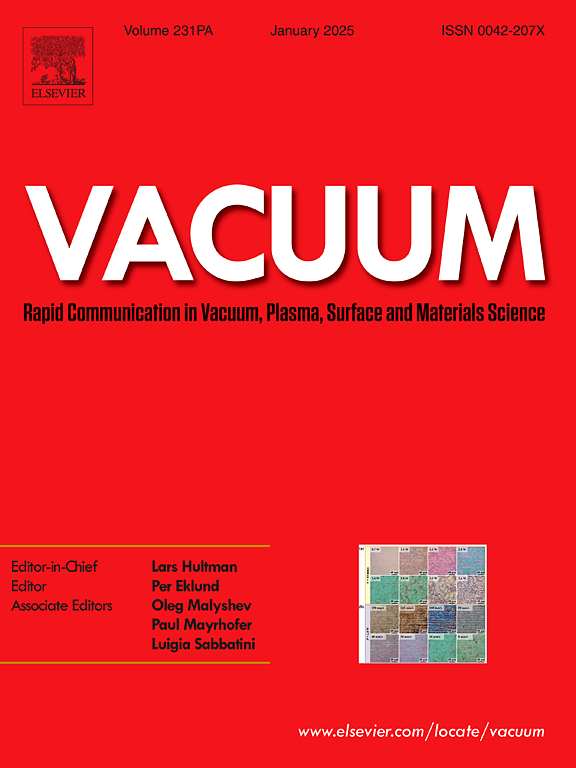Synthesis of high-purity aluminum via carbothermic reduction in microwave plasma for trimethylaluminum production
IF 3.9
2区 材料科学
Q2 MATERIALS SCIENCE, MULTIDISCIPLINARY
引用次数: 0
Abstract
High-purity aluminum is extensively utilized in metallurgy, microelectronics, and chemical synthesis. In this study, a method involving the carbothermic reduction of aluminum powder in a microwave plasma discharge was employed, resulting in the formation of valuable organic products such as synthesis gas, acetylene, and benzene. The aluminum powder was characterized using inductively coupled plasma mass spectrometry (ICP-MS), scanning electron microscopy (SEM), and powder X-ray diffraction (XRD). The yield of by-products was analyzed using gas chromatography coupled with a mass spectrometer, along with optical emission spectroscopy of the plasma discharge. The high-purity aluminum powder obtained from the plasma reduction was subsequently used to synthesize oxygen-free trimethylaluminum (TMA 99.9995 % main substance by weight). Notably, TMA was synthesized in a single vacuum cycle without system depressurization, enhancing the purity of the final product (7N by trace metal analyses). The synthesized trimethylaluminum was further analyzed using gas chromatography, gas chromatography-mass spectrometry (GC-MS), and ICP-MS.
微波等离子体碳热还原法制备高纯铝的研究
高纯铝广泛应用于冶金、微电子、化工合成等领域。本研究采用微波等离子体放电对铝粉进行碳热还原,生成合成气、乙炔、苯等有价值的有机产物。采用电感耦合等离子体质谱(ICP-MS)、扫描电镜(SEM)和粉末x射线衍射(XRD)对铝粉进行了表征。利用气相色谱联用质谱仪和等离子体放电的光学发射光谱分析了副产物的产率。等离子体还原得到的高纯铝粉随后用于合成无氧三甲基铝(TMA占主物质重量的99.9995%)。值得注意的是,TMA是在单次真空循环中合成的,没有系统减压,提高了最终产品的纯度(微量金属分析为7N)。进一步采用气相色谱、气相色谱-质谱联用(GC-MS)和ICP-MS对合成的三甲基铝进行分析。
本文章由计算机程序翻译,如有差异,请以英文原文为准。
求助全文
约1分钟内获得全文
求助全文
来源期刊

Vacuum
工程技术-材料科学:综合
CiteScore
6.80
自引率
17.50%
发文量
0
审稿时长
34 days
期刊介绍:
Vacuum is an international rapid publications journal with a focus on short communication. All papers are peer-reviewed, with the review process for short communication geared towards very fast turnaround times. The journal also published full research papers, thematic issues and selected papers from leading conferences.
A report in Vacuum should represent a major advance in an area that involves a controlled environment at pressures of one atmosphere or below.
The scope of the journal includes:
1. Vacuum; original developments in vacuum pumping and instrumentation, vacuum measurement, vacuum gas dynamics, gas-surface interactions, surface treatment for UHV applications and low outgassing, vacuum melting, sintering, and vacuum metrology. Technology and solutions for large-scale facilities (e.g., particle accelerators and fusion devices). New instrumentation ( e.g., detectors and electron microscopes).
2. Plasma science; advances in PVD, CVD, plasma-assisted CVD, ion sources, deposition processes and analysis.
3. Surface science; surface engineering, surface chemistry, surface analysis, crystal growth, ion-surface interactions and etching, nanometer-scale processing, surface modification.
4. Materials science; novel functional or structural materials. Metals, ceramics, and polymers. Experiments, simulations, and modelling for understanding structure-property relationships. Thin films and coatings. Nanostructures and ion implantation.
 求助内容:
求助内容: 应助结果提醒方式:
应助结果提醒方式:


